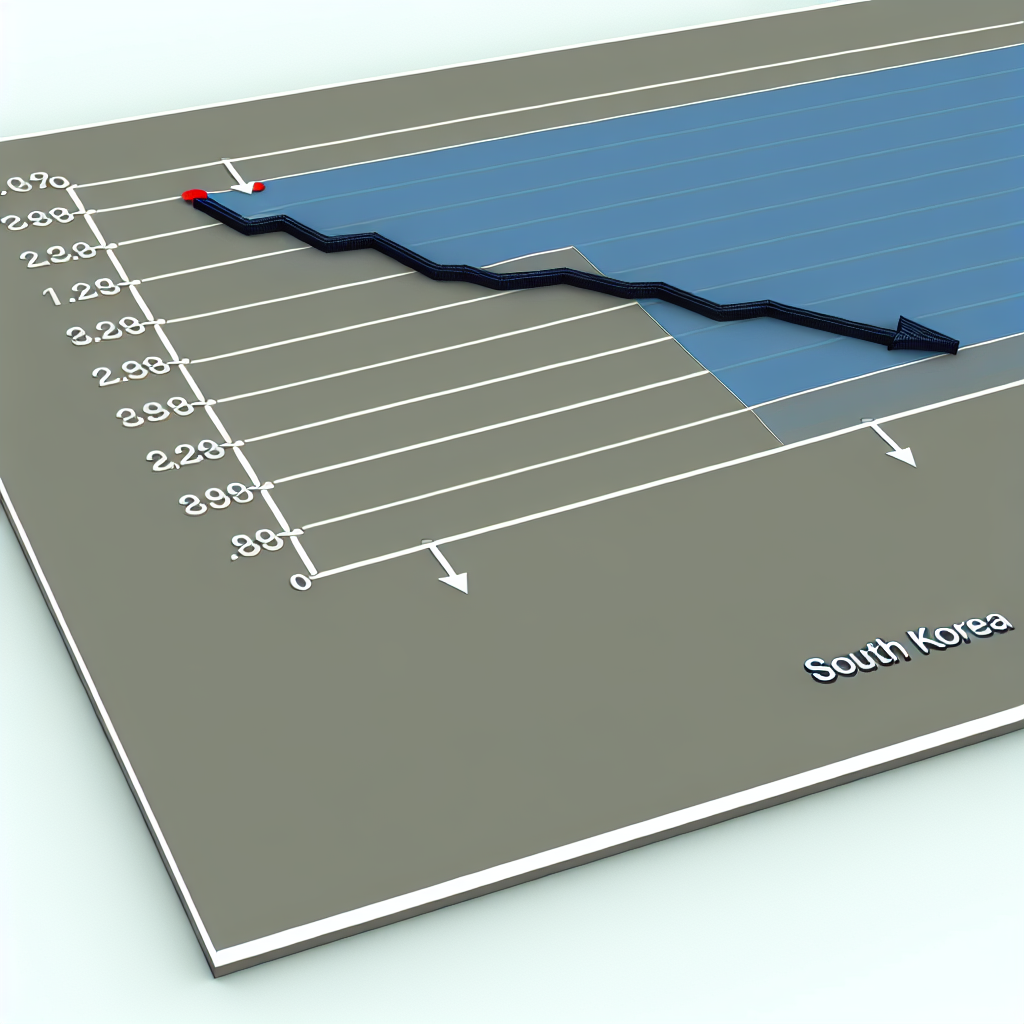South Korea’s Exports Hit Record Low: Analyzing the Causes and Implications
South Korea, known globally as a powerhouse in technology, automotive, and shipbuilding industries, has recently experienced a significant downturn in its export performance. In 2024, the country’s exports hit a record low, raising concerns about the health of its economy and the global trade environment. This article delves into the factors behind this decline, its impact on South Korea’s economy, and potential strategies to reverse the trend.
Understanding the Export Decline
South Korea’s export sector has traditionally been a major driver of economic growth, accounting for nearly 40% of its GDP. However, recent data from the Korea Customs Service revealed that exports fell by 12.5% year-on-year in the first quarter of 2024, marking the steepest decline since the global financial crisis in 2009.
Several key factors have contributed to this downturn:
- Global Economic Slowdown: The ongoing economic uncertainties in major markets such as the United States, China, and the European Union have dampened demand for South Korean goods.
- Supply Chain Disruptions: Lingering effects of the COVID-19 pandemic, coupled with geopolitical tensions, have disrupted supply chains, increasing costs and delaying shipments.
- Rising Raw Material Prices: The surge in prices for essential raw materials like semiconductors and steel has squeezed profit margins for exporters.
- Currency Fluctuations: The strengthening of the South Korean won against the US dollar has made exports more expensive and less competitive internationally.
Sector-Specific Impacts
While the export decline has affected multiple sectors, some industries have been hit harder than others:
- Semiconductors: As South Korea is home to giants like Samsung Electronics and SK Hynix, the semiconductor sector’s 15% export drop is particularly alarming. The global chip shortage has eased, but demand remains volatile.
- Automobiles: Exports of vehicles fell by 10%, impacted by supply chain issues and increased competition from electric vehicle manufacturers worldwide.
- Shipbuilding: Once a dominant force, South Korea’s shipbuilding exports declined by 18%, affected by reduced orders and competition from China.
Case Study: Samsung Electronics’ Export Challenges
Samsung Electronics, South Korea’s flagship exporter, reported a 14% decrease in overseas sales in early 2024. The company cited weaker demand for smartphones and memory chips as primary reasons. Additionally, Samsung’s efforts to diversify its supply chain and invest in new technologies have been slowed by rising costs and geopolitical uncertainties, particularly tensions between the US and China.
Economic and Policy Implications
The export slump poses significant risks to South Korea’s broader economy. Reduced export revenues can lead to lower corporate profits, job losses, and decreased government tax income. The Bank of Korea has already hinted at potential monetary policy adjustments to support economic growth.
In response, the South Korean government has announced several measures:
- Increased support for small and medium-sized exporters through subsidies and low-interest loans.
- Investment in emerging industries such as green technology and biotechnology to diversify export portfolios.
- Strengthening trade partnerships through new free trade agreements, particularly with Southeast Asian countries.
Looking Ahead: Opportunities Amid Challenges
Despite the current difficulties, South Korea’s export sector has opportunities for recovery and growth. The global shift towards renewable energy and digital transformation offers new markets for Korean companies. For example, Hyundai Motor Group is aggressively expanding its electric vehicle lineup, aiming to capture a larger share of the global EV market.
Moreover, South Korea’s expertise in advanced manufacturing and innovation remains a competitive advantage. By investing in research and development and enhancing supply chain resilience, the country can better navigate future uncertainties.
Conclusion
South Korea’s record low exports in 2024 highlight the complex interplay of global economic conditions, supply chain challenges, and sector-specific issues. While the decline poses immediate risks to the economy, proactive government policies and strategic industry shifts offer pathways to recovery. As South Korea adapts to a rapidly changing global trade landscape, its ability to innovate and diversify will be crucial in regaining export momentum and sustaining long-term economic growth.





